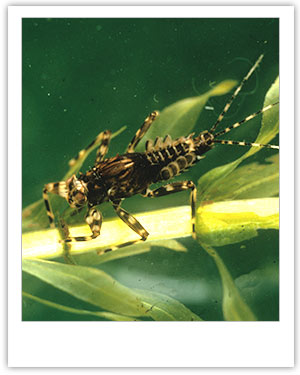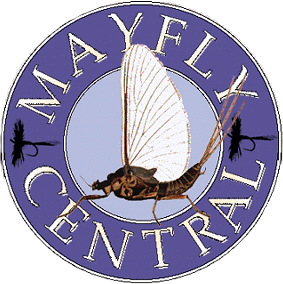Basis/Purpose - Mayflies of North America
 Drunella grandis
Drunella grandisBear Creek, Washington
The essential foundation for the Species List of the Mayflies of North America is "The Ephemeroptera species of North American Ephemeroptera and index to their complete nomenclature" by W. P. McCafferty, 1996 in the Transactions of the American Entomological Society, vol. 122, pages 1-54. Numerous style differences exist between the electronic version and the published version for obvious reasons. Also, while published lists are somewhat out-of-date even when first published, the electronic version will continue to be current as discussed in Keeping the Mayflies of North America current. The higher classification used in The Mayflies of North America is modified from the Ephemeroptera section of Nomina Insecta Nearctica, Vol. 4, pp. 89-117 by W. P. McCafferty.
The Mayflies of North America project is one of the primary objectives of Mayfly Central, and as such, changes, additions, and deletions to the species list and distributions of species are constantly monitored in the scientific literature. Besides this, there are active systematic and faunistic research programs being conducted at Mayfly Central that directly impact The Mayflies of North America.
Why the Mayflies of North America?
Mayflies constitute one of the most important groups of bottom-dwelling animals in streams and rivers throughout the world. They are also found in ponds and shallow lake areas. While the larvae (or nymphs) of mayflies live in water, the adults (and subimagos) are delicate flying forms noted for their often ephemeral lives. Mayflies are routinely used for monitoring water quality because their presence and diversity can be valuable indicators of the health of their aquatic environment. Mayflies are a vital link in the food web of freshwater ecosystems, making energy stored in algae and other aquatic plants available to higher consumers (other invertebrates, fish, birds, etc.). Any fly fisher can expound on the value of mayflies as food for many gamefish and more specifically as models for fashioning tied flies. With renewed emphasis on understanding our biota, the time is ripe for beginning the documentation of the biodiversity and distribution of the mayfly fauna in an easily accessible and current format. In Mexico and some areas of the United States and Canada, mayfly species are susceptible to existing and impending environmental degradation. It is even more important to understand the makeup and distribution of these endangered and impacted species. Already, four recent species of North American mayflies (Ephemera compar, Isonychia diversa, Pentagenia robusta, Siphlonurus luridipennis) are considered to have recently become extinct.
It is important to document the biodiversity of mayflies for the reasons stated above. An expedient means of managing this information and frequently updating it as research endeavors continue to shed more light on the subject is by providing The Mayflies of North America on the World Wide Web.

